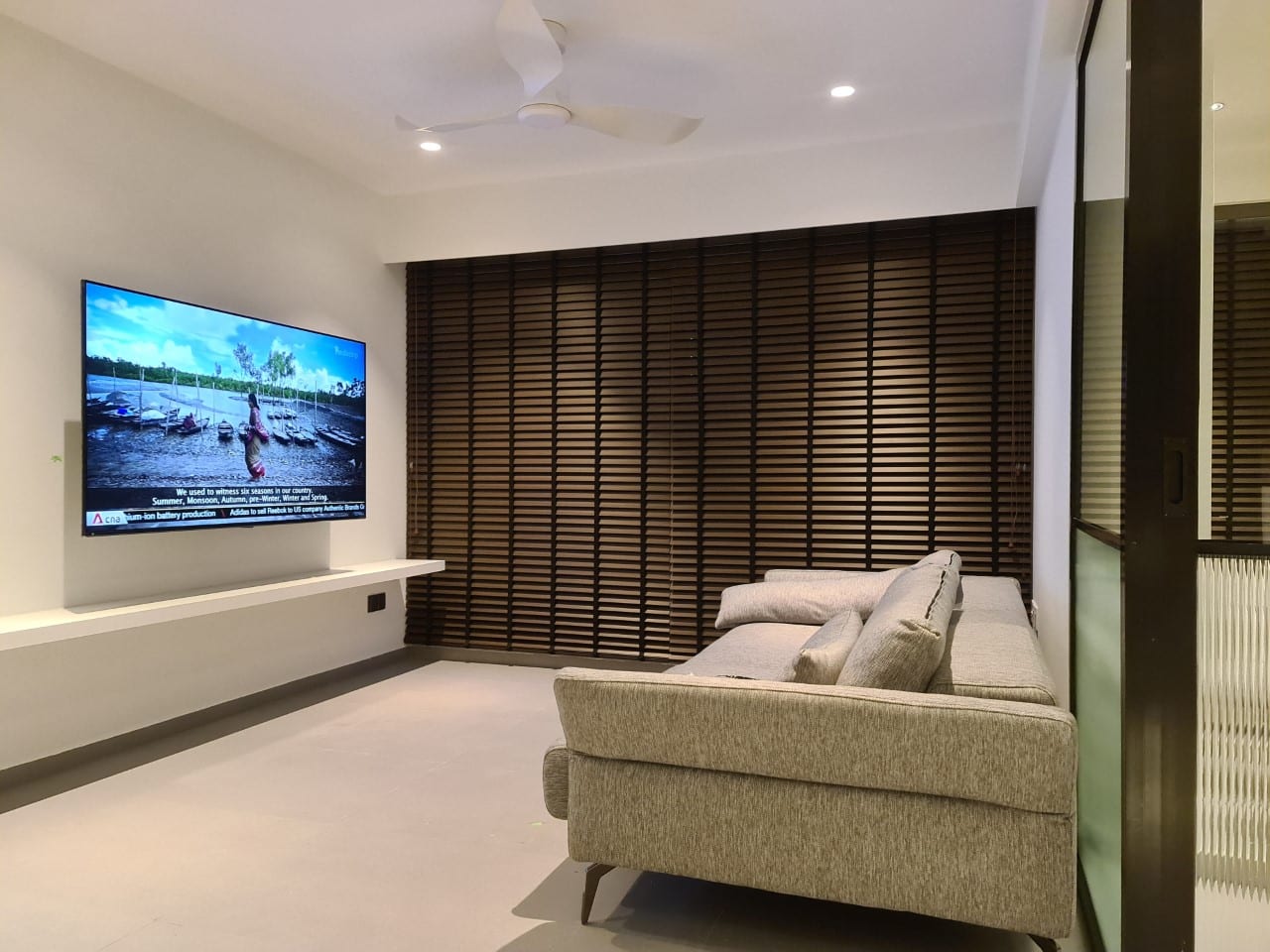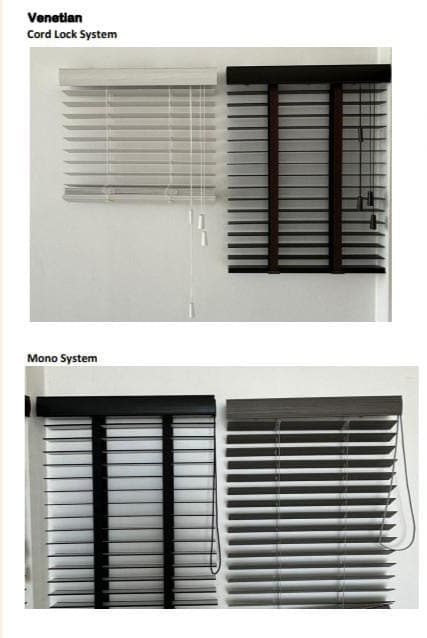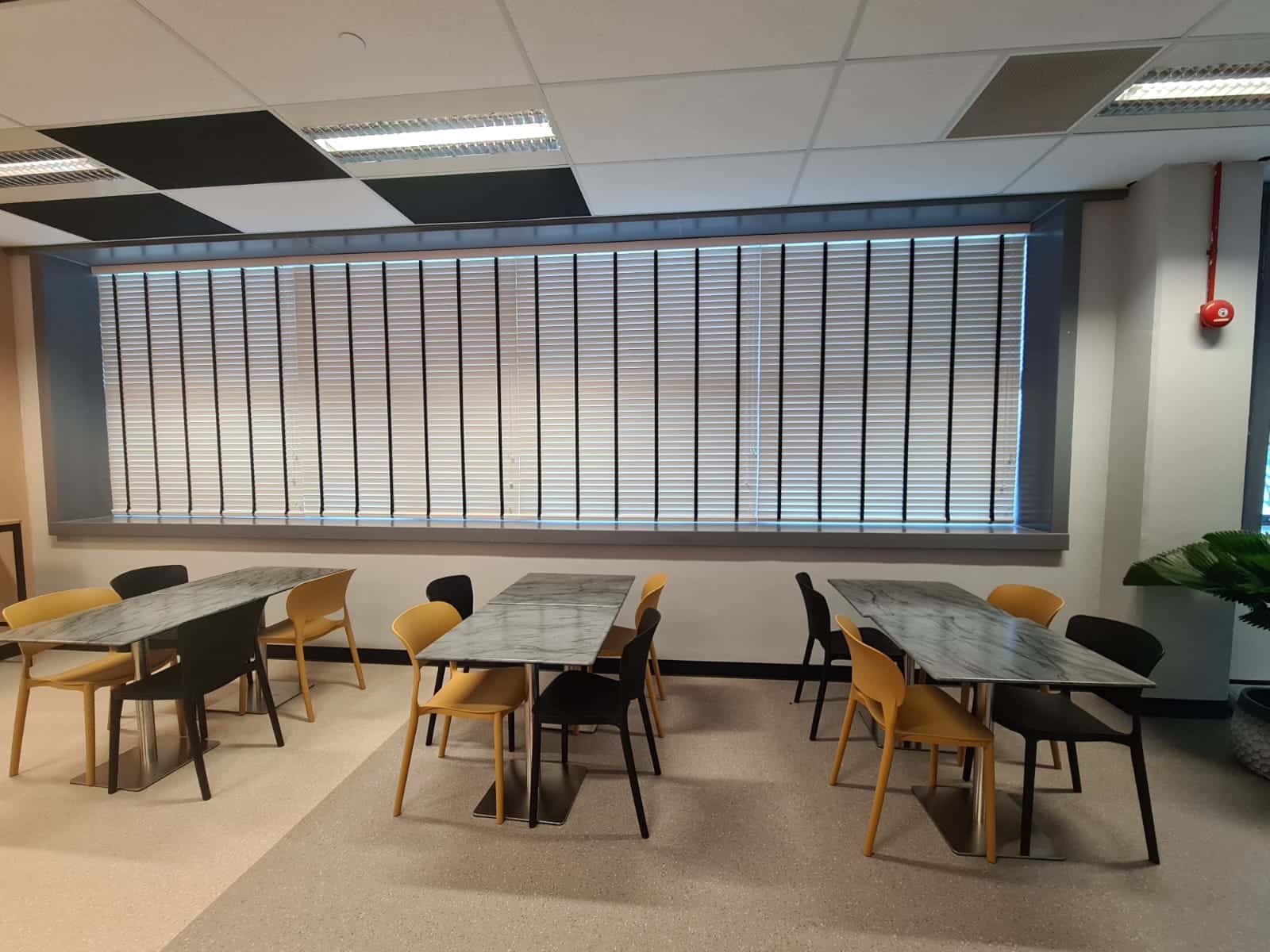Introduction to Venetian Blinds
Venetian Blinds are like a timeless piece of art enhancing the character of any room. Also known as horizontal blinds, their popularity has spanned centuries, adapting to evolving tastes while retaining their core appeal in both homes and offices. Unlike roller blinds, their defining feature lies in the ability to tilt the slats, allowing for adjustments to the amount of light entering a room and the level of privacy desired, as well as the capacity to be raised and lowered entirely.

Venetian blinds Cord Lock System
Cord Lock
Lifting and Lowering:
To lift the blind, tilting the cord strings to the pulley direction at a 25 degrees angle to release the lock mechanism and pulling the cord strings allows you to lift the blind causing the slats to stack neatly at the top. The cord lock typically engages automatically when you stop pulling.
To lower the blind, tilting the cord strings to the opposite direction from pulley strings releases the lock mechanism, carefully let the cord slide through your hand to allow the blind to descend smoothly. Once the desired height is reached, tilting the cord towards the mechanism edge re-engages the lock, holding the blind securely in place.
Tilting the Slats:
Adjusting the angle of the slats for light and privacy control is managed by a separate tilt cord, also housed in the headrail. Pulling one cord tilts the slats upwards while pulling the other tilts the slats downwards.
Mono System
A mono control system for Venetian blinds operates using a single continuous loop cord, often made of nylon. Pulling one side of the loop tilts the slats upwards first; continuing to pull that same side after the slats reach their limit will then raise the blind. Pulling the other side of the loop will first tilt the slats downwards and then, with continued pulling, lower the blind.

Venetian Blinds Material
PS/PVC
Polystyrene, a lightweight and moisture-resistant plastic that is more durable than wood. Unlike real wood, polystyrene can endure constant water exposure without warping or fading, making it highly suitable for humid areas such as toilet windows, and often features artificial grains for a wood-like appearance.
Wood
Though real wood Venetian blinds provide a certain level of heat insulation, which can contribute to energy savings, they often come with a premium price tag, and their susceptibility to warping, discoloration, and other damage from Singapore’s consistently high humidity make them a less practical and potentially more costly option to maintain.

Aluminum Venetian Blinds
Aluminum Venetian blinds are an excellent choice for areas with limited mounting space due to their lightweight and slim design, which allows them to fit easily into narrow spaces, and they are available in a wide variety of colors.



